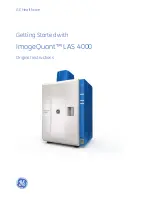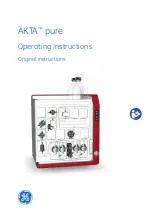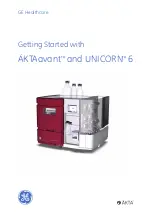
D-10
ApexPro™
2001989-200E
Troubleshooting
Transmitter-related messages
The following messages appear in the patient’s bed window on the CIC Pro center
display.
System status messages
System status alarms (generated by mechanical conditions) are displayed at the top of
the CIC Pro center screen. Each message is preceded by the receiver system’s name,
if it has been entered, or a name created by using the last six numbers of the receiver
system Ethernet address.
GRAPH ALARM
An alarm graph was initiated and is running.
GRAPH MANUAL
A manual graph was requested and is running.
GRAPH TTX
The graph button on the transmitter was pressed and a
20-second graph strip is running.
PRINTING
A non-real time graph is currently being printed.
SAVING
An alarm or a manual graph has been requested but the
writer is in use, the writer door is open, the print location is
not correct, or the writer is out of paper. The request is
saved and will run as soon as the writer is available.
CHANGE BATTERY
This message flashes when the batteries are low. There is
approximately 1 hour of use left after this message
appears. If the batteries are extremely low or completely
dead, a
NO TELEM
message flashes, and an audible
alarm sounds.
LEADS FAIL
All leads have failed, right leg lead failed, right arm lead
failed, leadwires unplugged or reference lead failed. If set
to System
Warning
or System
Advisory
level, a system
alarm occurs. This will self-silence if condition is
corrected, or user can silence for one minute with
Silence
Alarms
button at the bottom of the CIC Pro center display.
NOTE
LEADS FAIL
will not result in a
NO TELEM
alarm
message after 30 seconds.
RA (LA, LL, V) FAIL
One of these may appear, indicating failure of a lead.
NO TELEM
The transmitter was out of range for more than 30
seconds. If this condition persists, contact GE Technical
Support.
If a
LEADS FAIL
condition occurs prior to a
NO TELEM
condition, the
LEADS FAIL
condition takes priority
TTX number is already in
use
This message displays when attempting to admit a
transmitter that is sequentially numbered with another
admitted transmitter. For example, you cannot admit TTX
ID number 54078 and 54079 at the same time. Use
another transmitter with a non-sequential TTX ID number
to admit the patient.
Содержание ApexPro
Страница 13: ...2001989 200E ApexPro 1 1 1 Introduction ...
Страница 31: ...2001989 200E ApexPro 2 1 2 Equipment overview ...
Страница 36: ...2 6 ApexPro 2001989 200E Equipment overview ...
Страница 37: ...2001989 200E ApexPro 3 1 3 Equipment setup ...
Страница 50: ...3 14 ApexPro 2001989 200E Equipment setup ...
Страница 51: ...2001989 200E ApexPro 4 1 4 System setup ...
Страница 69: ...2001989 200E ApexPro 5 1 5 Alarms ...
Страница 86: ...5 18 ApexPro 2001989 200E Alarms ...
Страница 87: ...2001989 200E ApexPro 6 1 6 Managing patients ...
Страница 109: ...2001989 200E ApexPro 7 1 7 Viewing real time patient data ...
Страница 144: ...7 36 ApexPro 2001989 200E Viewing real time patient data ...
Страница 145: ...2001989 200E ApexPro 8 1 8 Viewing stored patient data ...
Страница 166: ...8 22 ApexPro 2001989 200E Viewing stored patient data ...
Страница 167: ...2001989 200E ApexPro 9 1 9 Printing ...
Страница 175: ...2001989 200E ApexPro A 1 A Abbreviations and symbols ...
Страница 183: ...2001989 200E ApexPro B 1 B Customized defaults worksheet ...
Страница 186: ...B 4 ApexPro 2001989 200E Customized defaults worksheet ...
Страница 187: ...2001989 200E ApexPro C 1 C Maintenance ...
Страница 194: ...C 8 ApexPro 2001989 200E Maintenance ...
Страница 195: ...2001989 200E ApexPro D 1 D Troubleshooting ...
Страница 206: ...D 12 ApexPro 2001989 200E Troubleshooting ...
Страница 207: ...2001989 200E ApexPro E 1 E Technical specifications ...
Страница 214: ...E 8 ApexPro 2001989 200E Technical specifications ...
Страница 217: ......















































